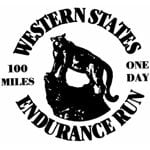 Ahead of the 2015 Western States 100, we talk with Emma Roca, Pam Smith, Anita Ortiz, and Nicole Studer. Emma is a standout Spanish ultrarunner, Pam is the 2013 WS 100 champ, Anita is the 2009 champ, and Nicole Studer kills it in just about every race she runs in her home state of Texas.
Ahead of the 2015 Western States 100, we talk with Emma Roca, Pam Smith, Anita Ortiz, and Nicole Studer. Emma is a standout Spanish ultrarunner, Pam is the 2013 WS 100 champ, Anita is the 2009 champ, and Nicole Studer kills it in just about every race she runs in her home state of Texas.
In these interviews, Emma talks about why she’s drawn to certain American races, Pam discusses her approach to running States when she’s less fit than previous years, Anita tell us about the injury on which she plans to race, and Nicole shares her thoughts on running her first WS 100.
You can jump immediately to interviews with:
Don’t forget to check out our full women’s preview as well as our other set of written interviews with Stephanie Howe, Magdalena Boulet, Michele Yates, and Meghan Arbogast to see who these ladies will be racing.
Emma Roca
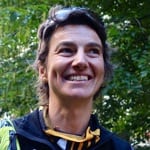
Emma Roca
iRunFar: Last summer you raced another popular American 100 miler, Leadville. You’ve also traveled to the U.S. before for travel and vacation. Now you will race Western States. It seems that you very much like the American West. Can you talk about what draws you back to America, our races, our mountains, for your free time and racing?
Emma Roca: I’m coming back because I love the people here, the ambiance, and races. Being here is a unique opportunity, running the big ultra-distance races, and with my family having a great time too! In 2013 I came to run Speedgoat and prepare for UTMB in Crested Butte, Colorado, where we have a friend and made a home interchange with an American family. In 2014, I came to run Leadville having seen a big part of the course the year before. Also with my family, and visiting old American friends we have from the time we were adventure racers.
This year, 2015, the main goal is Western States. We’ve also made a house interchange with an American friend who is a former adventure-racing champion and a great mountain biker. I hope to get into Hardrock next year, so I’ll be making my dream of participating in the three big races of the USA come true.
iRunFar: You are used to mountain races in Europe with incredible vertical gain and drop. You experienced a more runnable 100 miler at Leadville last year, and now you are running another more runnable 100 miler at Western States. What are your thoughts on the differences and similarities between the types of courses you see in Europe and the U.S.?
Roca: There’s an evident change of elevation and technicism. Trails are way more runnable in races in the U.S., in comparison with races back home. I can adapt pretty well, but sometimes I would like it if they were a bit more technical. The inconvenience of having these runnable ultras is that you don’t make many changes of the muscle groups you use, and that makes races way more harder for me! For example, in UTMB you walk a lot and it allows you to change the pace, position, and mind focus. On the other hand, runnable races are faster and take less time, and they don’t destroy that much your body. Also, the pacer role is essential. I think there should be pacers in every race over 100 kilometers all around the world, because it’s a security, assistance, and comfort point, making it necessary after more than eight hours of running nonstop.
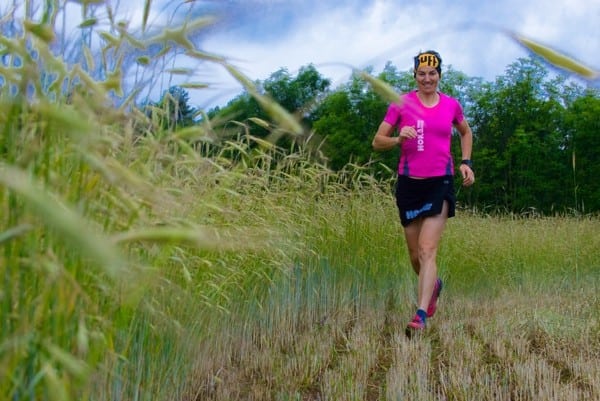
Emma. Photo: Marta Bacardit
iRunFar: What will be your race-day strategy? Knowing what you know about the course, the other women racing, your own strengths and weaknesses, what style of race do you see yourself having? How do you hope your race plays out?
Roca: Ha, ha, it’s a secret! Just kidding. I will try to be as conservative as I can, going from less to more as I always do, and even more in this race that starts in altitude and then goes down. It’s also very important to manage well hydration, and then after Foresthill, if I feel fine and strong, I will go for more. I hope my experience in ultramarathons is useful for this big race, and also the mental strength you acquire after years of racing is essential for long races.
iRunFar: You mention pacers. One big difference from European and American ultras is pacers. Europe doesn’t have them but the U.S. does. Do you have pacers for Western States? Who will they be? Do you have a crew? Who is your crew? If you are using a pacer, are you looking forward to this different approach, and experiencing something that’s unique about American ultrarunning?
Roca: As I said before, the pacer figure is vital, and I think it’s essential in every ultra! I love it, and I owe my race in Leadville last year to them! (Rob and Travis.) This year Amy Sproston will come to pace me. I met her at El Cruce Columbia in South America. She’s a great runner and she also has great experience in this race. My crew will be my husband, David, and my three children, together with Jamie Frink who has just been second at the Bighorn 100 Mile!
[Want to hear more of Emma’s thoughts? Then watch our pre-race video interview with Emma.]
Pam Smith

Pam Smith
iRunFar: You’re a five-time WS 100 finisher. You’ve already said that this probably isn’t going to be ‘the year’ for you, competition-wise. It’s 100 miles. It’s a hard 100 miles, as these races go. What keeps you coming back to Western States? History? Community? Masochism? Something different?
Pam Smith: Good question! After Lake Sonoma, I was convinced I didn’t want to come back this year. But going to Western States Memorial Weekend Training Runs changed my mind as I was reminded what a special event this is–from the people to the history to the course itself. I ran all three days with my husband at a relaxed pace and just had a great time out there. It made me realize I would be disappointed if I wasn’t part of this year’s race, even if I am not at the level I want to be.
iRunFar: Can you talk about what’s going on with you, physically? You’re recovering from some overtraining/over-racing issues from about a year ago? Can you give us you hindsight perspective on the last year and where you’re at now? Also, given that you’re trying to climb out of a hole, how do you know that running 100 miles–even non-competitively–will not leave you in it?
Smith: Starting around the end of 2012, I had a magical 18 months of running, not just with race results, but also with all the training. I was running fast and I was loving every run. I think the big difference in 2014 was having older kids that had so many activities of their own, especially softball and baseball, which had multiple games a week ending after 8 p.m. That doesn’t sound late, but I was getting up every morning at 4:30 a.m. to run before work and had been pretty diligent about an 8:30 p.m. bedtime. (Yes, I know how lame that sounds!) But that got pushed back to 9:30 p.m. most nights. Still, I was getting all my workouts in feeling pretty good and had a great 25k three weeks before WS 100 last year with a lot of hard downhill running, but then I never felt like I bounced back. I struggled all day at WS 100 and felt off starting about mile 1, and just felt like I was working so hard.
Angeles Crest was five weeks later and I did almost no running between the two, such that I felt really good the first 75 miles of that race. Again, I just pushed really hard to the finish as I was motivated to get the course record. When I finished, all I could do was lay on a park bench for the next half hour I was so spent. I took a couple weeks off, but the dead feeling in my legs persisted.
The 100k World Championships was three months away, so I felt like I had to keep training for the team. A fast 100k on rock-hard tile certainly doesn’t help the legs feel springy again! I took it really easy through the winter and thought I had turned things around, but my first two races of this year were disasters: first a blow-up in a marathon at mile 16, then legs that just had nothing at mile 12 at Lake Sonoma. I took four weeks off completely after that–no cross training or anything. I was pretty bummed out and very frustrated with running so it just felt like what I needed to do even though it was poor timing for WS 100.
Honestly, I don’t know where I am at right now. I am not trying to be coy or to sandbag, I just feel like I have no way of knowing if I’ll feel good or bad on race day. And with only five solid weeks of training, it is hard to be confident in my fitness. Yeah, the race could potentially set me back, but I am not ready to resign myself to being completely washed up just yet! The only way to know is to go run!
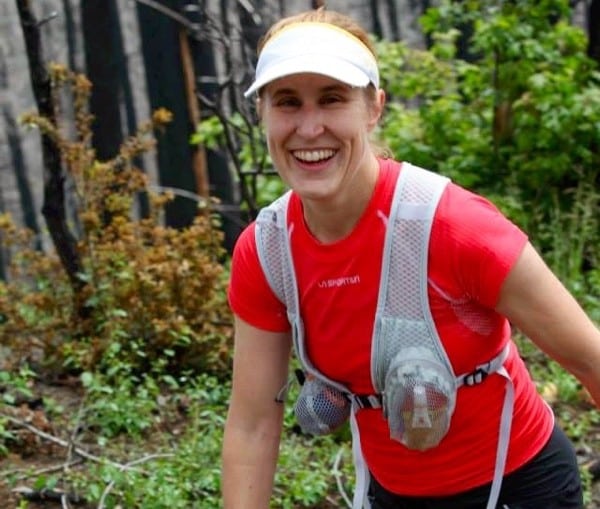
Pam training on the Western States Trail. Photo: Joe McCladdie
iRunFar: You’ve had four top-10 finishes, and one back-of-the-pack finish at WS 100. Perhaps you’re looking for a performance that’s somewhere in between? Describe what you think your race day is probably going to look like?
Smith: Well, I certainly don’t want to do worse than my 29-hour finish! I don’t think I can match my times for the past two years, but I feel like my skill set for 100 miles is so much greater than the first couple years I ran WS 100, and that is worth a lot. I’ll definitely be following the same plan as I used for the last two years, but without looking at any specific split times.
iRunFar: You excel in heat and you are analytical of your surroundings and how they affect you. What happens if it’s an intense day, climactic-ly, and you find yourself creeping into a competitive position just by doing your own thing.?Will you start to race? Will you shrug your shoulders and let things come what may? Have you contemplated this possible eventuality?
Smith: I enjoy competition immensely and I certainly don’t want to give the impression that I’ll be oblivious to the race aspect of the event. Of course I want to do well and yeah, it’d be great to be top 10 again. If I am feeling good, I know my competitive side will come out. But I am being realistic about the uncertainty of my situation and not setting any expectations that will leave me feeling disappointed. If I feel good and enjoy running, I’ll be happy. If I manage to place well, I’ll be even happier.
Anita Ortiz

Anita Ortiz
iRunFar: You’re back! After a lengthy absence from Western States, here you are again. Via social media, it seemed like you were torn with the decision of whether to take your ‘ticket’ or not when you finished Sean O’Brien 100k in second. Can you walk us through the process of deciding that, yes, you wanted to race a Montrail Ultra Cup race and, yes, you did want to start WS 100 again?
Anita Ortiz: I was not torn in the least–once I got the spot I was all for it. HOWEVER, I went to Sean O’Brien only because I had an airline ticket that was due to expire. I wanted to race in Cali because Colorado is still crummy at that time of year. It was a running vacation for Katie Mazzia and I. I was also going to use it as a warm up for Cruel Jewel. That was my main race this year because I want to get a qualifier for Hardrock. In fact, when I registered for SOB I didn’t even know it was a WS 100 qualifier. WS 100 was just not on my radar at all. It had been a painful, awful experience the last time I ran it (2011) and I really didn’t want to ever relive those memories. When I found out it was a qualifier, I still didn’t even consider the possibility–because I knew a lot of people would be gunning for the spot. I held, in the back of my mind, a little wish–that maybe, just maybe, I could do it. I must want to face down the WS 100 demons.
But honestly, I am scared. Very scared.
iRunFar: Winning WS 100 is one of the biggest achievements an ultrarunner can put on her resume. How do you look back at that year, that performance, your day? What kinds of memories do you have?
Ortiz: It was/is the biggest achievement I put on my running resume as an ultrarunner. But I came from a mountain-running background and did many MANY equally cool things. It’s fun to have a running resume that encompasses such a broad range.
As for the winning WS 100 day, sadly I don’t really remember much of it. Just snippets… bits and pieces here and there.
iRunFar: You had an injury scare in the last couple weeks, and put a note on Facebook saying you’d hurt your foot, and then another note that you were, indeed, going to start the race after all. What happened? What were the results of your MRI? What’s the current status of your foot?
Ortiz: Not just a scare, I have a split in my peroneal brevis. It hurts like hell and will be a challenge, but the doctor said I can race on it. He says, “I’ll likely damage it a bit more but not too much?” If I can handle the pain, I can race. I’m currently in a boot, just to try to get the swelling down. I’m super clumsy. I slipped into a cattle guard—like really, who does that?
This makes me scared. Very scared.
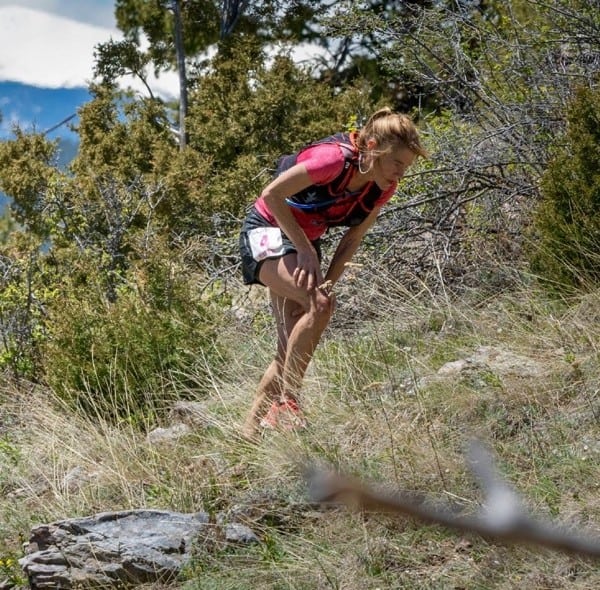
A lyric that keeps Anita moving: “It’s a long way to the top if you wanna’ rock n’ roll.” -AC/DC. Photo: Kurt Hardester
iRunFar: Best-case scenario for your race on Saturday: How does it go? How do you feel? Where do you relax? Where do you push? Who might you run with? What will you eat? How will you surmount the mental challenges of the distances/experience?
Ortiz: Best case, this Saturday I win!
Realistically, my uphill game is not what it used to be. That’s where I won it in 2009. This time I have put in a lot of miles–but slow miles. I think I can race consistent, but I’m not a top-10 contender. I’ll be super happy if I run and feel better than in 2011–my ‘blow-up’ year. I need to remember that I am older; I might have a slower time, but if I feel better, that will make me happy.
I have no real race plan. I know what I will eat (PowerGels), drink (Tailwind), the pills I will pop (Salt Stick), and have as a special mid-race treat (Starbucks Double Shot). Beyond that, planning is a moot point in my mind. You just take what the day gives you and go with it.
I don’t plan to run with anyone–I’m a heavy breather, and can’t talk and run. I’m the annoying runner you want to get away from because they are breathing hard and shooting snot rockets every which way.
However, I am very excited to have my bad-ass daughter Mandy pacing me this year, along with Katie Mazzia and Nancy Hobbs.
Oh… did I mention that I am scared, very, very scared? Face down those demons!
Nicole Studer

Nicole Studer
iRunFar: It’s your first Western States! You qualified for it and trained for it last year, but had a physical problem and couldn’t start. This year, you’re back again. Why WS 100? What draws you in?
Nicole Studer: I am so thrilled to take part in Western States! It was very disappointing not to participate last year, but it has given me added motivation for this year’s race. I am drawn to the tradition and caliber of all of strong runners participating. It is so inspirational to toe the line against such great runners. It also doesn’t hurt that the course is absolutely beautiful! I am looking forward to representing Dallas along with Shaheen Sattar.
iRunFar: I think you have almost never raced outside of Texas. Is this because of when and how you are able to fit races in around your busy career? Or is this in support of the Texas racing scene? And, what is it like to turn your sights to a race outside of your home territory? Exciting? Frightening?
Studer: I have traditionally raced in Texas to avoid significant travel, as I spend many work weeks traveling. There are so many awesome races with differing topography in Texas, so I have never felt a lack of excitement entering races in my home state. That being said, my goal for next year is to start running more races out of Texas. I’m looking forward to and am thankful for the opportunity to compete at WS 100, UTMB, and have added the Festival Des Templiers to my remaining 2015 calendar. I value the opportunity to visit new places, experience new trails, and compete/test my abilities against my fellow athletes. Hopefully I will continue to have the opportunity to venture out of Texas and see more beautiful trails in the near future.
iRunFar: What has your WS 100 training build-up looked like? Can you walk us through the last 10 weeks or so of your preparations?
Studer: I have bumped up my mileage and tried to focus on adding more hills and stair training. While we don’t have mountainous terrain, I have been able to do some eccentric training in attempt to adapt to the Western States conditions. Over Memorial Day weekend, I was fortunate to get in some training on the Western States course under the wise guidance of Paul and Meredith Terranova. It was helpful to learn some of the intricacies of the challenging course. Conveniently, I have also been able to get in strong heat-training running in Dallas and have wonderful training partners who have encouraged me to train hard in preparation. There is nothing like friends who will do stair workouts with you in the Texas heat!
iRunFar: What are your goals for this race? You finish at the front of almost every single race you enter. WS 100 is a whole different scene, however. There’s the mountainous terrain, the early altitude, the deep competition. Then again there are some familiar aspects, like the distance and the heat. How do you mentally approach this adventure?
Studer: My goal is to keep my composure and concentrate on my race. I find that I run strongest when I just focus on the beautiful course around me and enjoy the moment. Ultimately, my goal is to run a strong race and a top-10 finish would be icing on the cake. I am fortunate to have the support of the wonderful team/crew in Nathan and Courtenay Leehman, which is very comforting.

Nicole. Photo courtesy of Nicole Studer.
